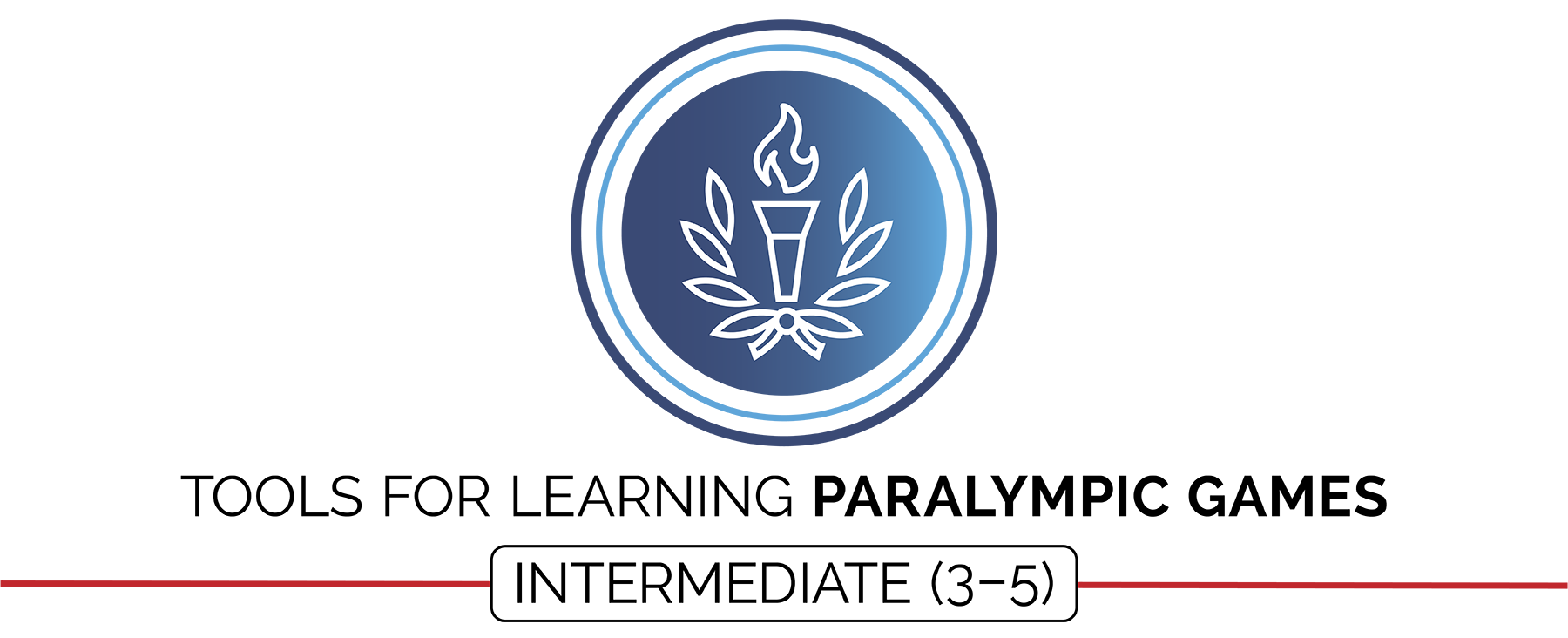Created by: Kate Darpino, Katie McNamara, Jolanda Hengstman, Aaron Hart, and Victor Spadaro
Special Contributions: Michelle Grenier, Lara Brickhouse, Lauren Lieberman, John Foley, and Deedi Brown
Design: Jennifer Truong
The Paralympic Games were designed to emphasize the participants’ athletic achievements and not their disabilities. The Paralympic movement began with a small gathering of British World War II veterans in 1948. Today, the Paralympics host thousands of competitors from over 100 countries and is one of the largest international sporting events in the world. This module was designed to introduce all students to the Paralympic spirit.
Module Documents
Complete Module Packet:
Module Overview:
Required Materials:
All Module Activities:
Sample Lesson Plan:
Academic Language Cards:
Universal Design Adaptations:
Para Alpine Skiing Event Cards:
Paralympic Sport Descriptions:
Paralympian Bios:
Activity Plans
Wheelchair Curling:
Para Biathlon:
Sled Hockey Dribble & Pass:
Zone Sled Hockey:
Para Alpine Skiing:
Para Cross-Country Skiing:
Paralympic Village Clean-Up:
Assessments
Self-Assessment Worksheet:
Holistic Performance Rubric:
Holistic Duel Performance Rubric:
Academic Language Quiz:
Teacher Evaluation
Teacher Self-Evaluation/Reflection Guide:
Planning Tools
Blank Activity Plan Template:
Blank Lesson Plan Template:
Can’t see the file links? Register for FREE today to access all of the modules. SIGN UP HERE
National Standards and Outcomes Focus for Paralympic Games
Standard 4. Exhibits responsible personal and social behavior that respects self and others.
- Standard 4 [E2.3-5]: Works independently for extended periods of time (3); Reflects on personal social behavior in physical activity (4); Participates with responsible personal behavior in a variety of physical activity contexts, environments, and facilities (5a); Exhibits respect for self with appropriate behavior while engaging in physical activity (5b).
Standard 5. Recognizes the value of physical activity for health, enjoyment, challenge, self-expression, and/or social interaction.
- Standard 5 [E1.3-5]: Discusses the relationship between physical activity and good health (3); Examines the health benefits of participating in physical activity (4); Compares the health benefits of participating in selected physical activities (5).
- Standard 5 [E4.3-5]: Describes the positive social interactions that come when engaged with others in physical activity (3); Describes/compares the positive social interactions when engaged in partner, small-group, and large-group physical activities (4); Describes the social benefits gained from participating in physical activity (e.g., recess, youth sport) (5).

